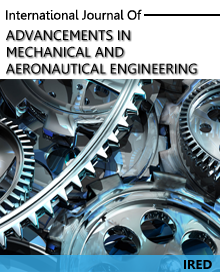Solvent Based Slurry Functional Graded Thermal Barrier Coating for Application in Automotive Turbocharger Turbine Volute Casing
Author(s) : ALIAS MOHD NOOR, MUHAMMAD RABIU ABBAS, UDAY M. BASHEER
 Abstract
Abstract
Tremendous amount of heat is being lost at the turbine area of an automotive turbocharger during its operation. Application of ceramic thermal barrier coating to components operating under severe temperature condition such as automotive turbocharger turbine volute casing can reduce the heat lost to the environment, improve the efficiency and reliability of components and extend their service life. But high cost of installation and maintenance, complexity and spallation problem due to thermal expansion mismatch between the ceramic and the metal substrate have seriously restricted the acceptance and widespread practice of ceramic thermal barrier coating. In the present study, a solvent based slurry functionally graded thermal barrier coating technique was employed in depositing different compositions of Yttria stabilized zirconia and nickel powders on a nickel alloy substrate using a simple laboratory-scale surface coating machine. The coating compositions of 25wt% YSZ & 75wt% Ni, 60wt% YSZ & 40wt% Ni and 75wt% YSZ & 25wt% Ni were used for the deposition of the first layer, second layer and third layer of the functionally graded coating on the nickel substrate respectively. Experimental validation of heat transfer across the coating and adhesion tests were used to evaluate the suitability and integrity of the functionally graded coating produced for the intended application. The coating microstructure was also analyzed using optical microscope, scanning electron microscopy (SEM) and energy dispersive X-ray (EDX). The results have shown that, the functionally graded coating produced has the heat resistance capability of 350C, 1400C and 2500C for one layer, two layer and three layer respectively. The adhesion strength of the coating improved with an increase in the number of the coating layers. There was no spallation problem observed from the coating, also no crack or deformation was observed from the results of the microstructural analysis of the functionally graded coating after the experimental heat transfer tests.
 Full Paper PDF
Full Paper PDF
